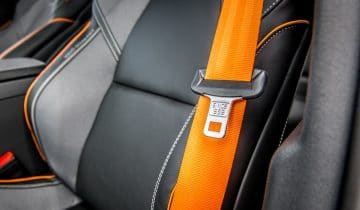Wearing seat belts is a crucial safety precaution when taking a long car trip. It can save lives, so it’s essential to understand how to spot a seat belt failure.
These safety features are vital in any vehicle, and experts should address any flaws in the system with immediate seat belt repair. A seat belt failure can be dangerous or even deadly, so it’s essential to know the most common causes of seat belt malfunctions. This article will focus on the most common causes of seat belt failures, so you can ensure your seat belt is appropriately functioning no matter the driving conditions.
Causes
Typical seat belt failures can have serious consequences. Once you figure out the root problem, you can show how to fix it! You may hire a qualified technician to look for assembly, lousy design, manufacturing, and other issues. They may then illustrate what causes the problems and assist you in troubleshooting the issue(s), such as:
- A Malfunctioning Latch: The latch is a vital connection between the seat belt and the buckle. Its function is just as important as that of the retractor. If it is not working correctly, the seat belt will not lock, and you will not be adequately protected in a car crash.
- Malfunctioning Retractor: One of the most critical components of a seat belt is the retractor. This locks the seat belt in place during sudden impact and prevents the driver or passenger from being thrown forward in the event of an accident. Retractor failure is one of the most common causes of seat belt failure.
- Spooling: If the seat belt webbing is loose, it won’t provide the driver or passengers with enough protection in the event of a car accident. The seat belts are related to the fault retractor because the retractor loosens the seat belt instead of tightening it before a sudden stop. This is a severe problem that you need to address with seat belt repair as soon as it is noticeable.
- Errors in assembly and manufacturing, such as a false latch (if the latch gets wholly inserted into a buckle, but a lock isn’t secure) or defective design, can cause your seat belt to fail.
- Also, faulty seat belt webbing material may not be strong enough to hold you during an accident.
- Retracting errors that create slack in a belt are also dangerous, as is detaching from the anchor points and mounts.
- It may not work correctly if the buckle is accidentally unlatched (for example, by a flying object or force).
Why Does It Need Immediate Seat Belt Repair? Because You Can Prevent These Injuries
The speed of the collision and the seat belt’s design are critical factors in what kinds of injuries are sustained. However, a seat belt not functioning correctly can cause or worsen injuries. Many types of damage can result from a seat belt failure, including minor cuts and bruises, spinal cord injuries, and more severe injuries. Some of the most common injuries are listed below:
- Brain injury
- Bone fractures
- Contusions
- Paraplegia
- Head trauma
- Internal organ damage
- Quadriplegia
- Spinal cord injury
- Death
Conclusion
Are you concerned about your vehicle’s safety features and need seat belt repair after reading this? Set your appointment with Safety Restore today! We lead the world in post-accident restorations and repairs for seat belts and airbags. Visit our website to learn more!


